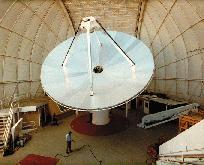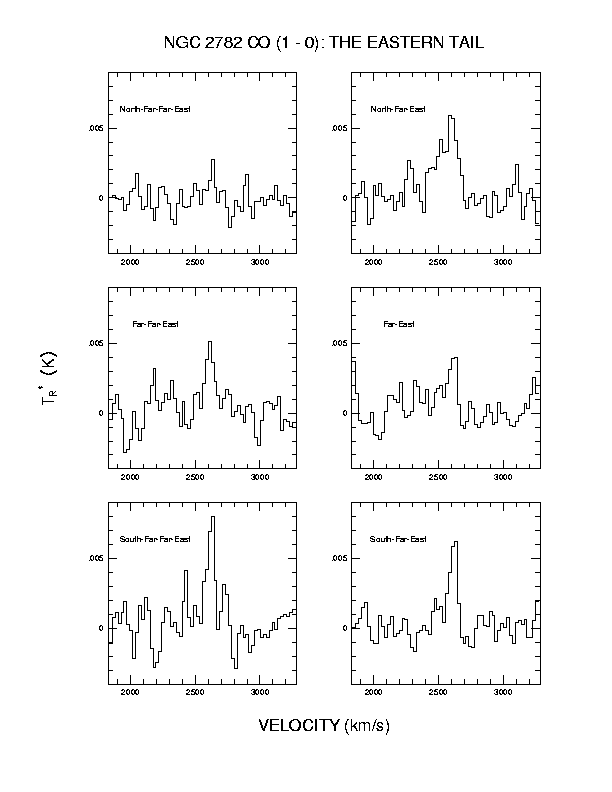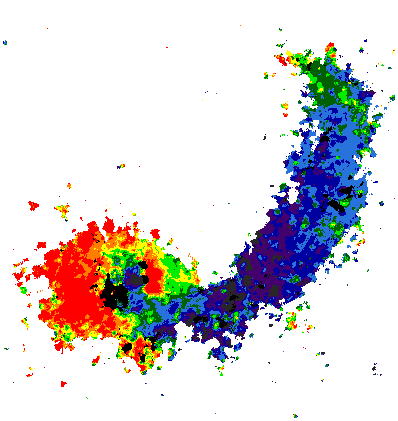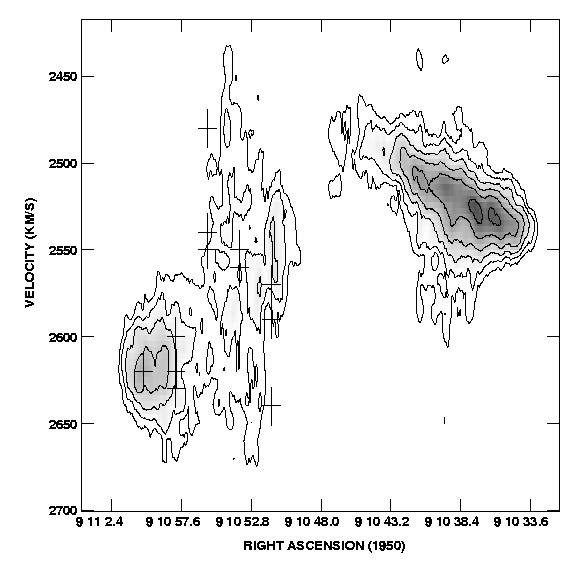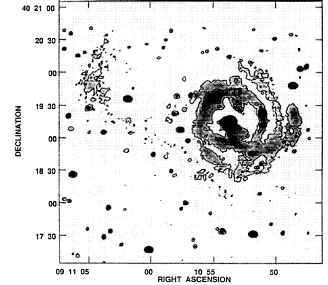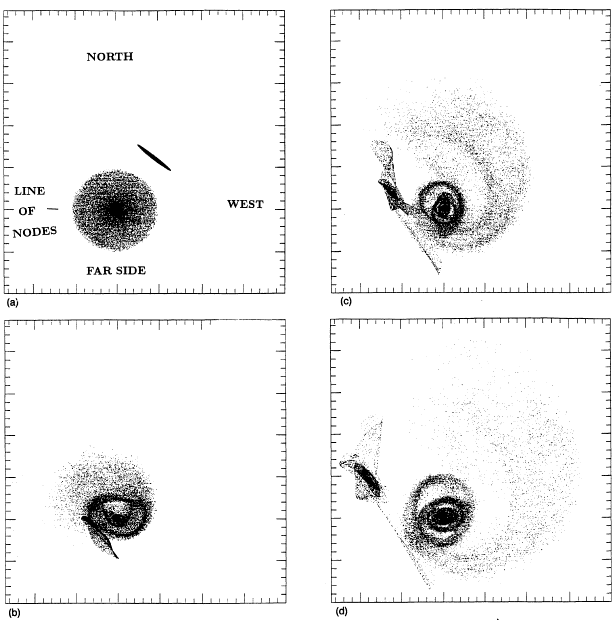The long tails and bridges extending from interacting and
merging galaxies are often the
birthplace of stars.
These tails often contain large quantities of
atomic gas, as seen by the 21 cm
line of atomic hydrogen.
Stars are believed to form out of molecular rather than atomic gas clouds;
do these tails and bridges also contain a lot of molecular gas?
To search for molecular gas in these features, we have been conducting
a survey of the
2.6mm line of carbon monoxide in a sample of tails and bridges.
This line is the standard tracer of molecular gas in
external galaxies.
In this survey,
the first detection of CO in an extragalactic tail was
made,
in the eastern tail of the peculiar galaxy
NGC 2782 (Arp 215).
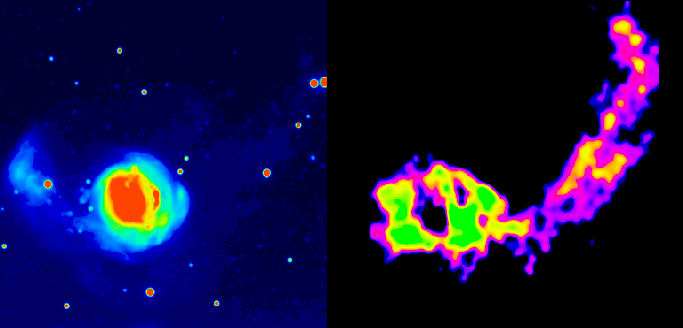
Left: an optical (B) image of NGC 2782, showing the distribution
of stars. Note the stellar tail extending to the east (left)
(from
(Jogee, Kenney, and Smith 1998, Astrophysical
Journal, 494, L185).
Right: the distribution of atomic hydrogen in NGC 2782,
as seen in the 21 cm HI line. The
radio data were obtained with the
Very Large Array,
part of the
National Radio Astronomy Observatory.
The elongated feature on the right (west)
is a tidal tail extending
50 kiloparsecs (5 arcminutes) from the main body of this
galaxy. To the east, a gaseous counterpart
to the stellar tail is visible: the gas does not
extend as far as the stars in this direction
(from
Smith 1994, Astronomical Journal,
vol. 107, p. 1695).

